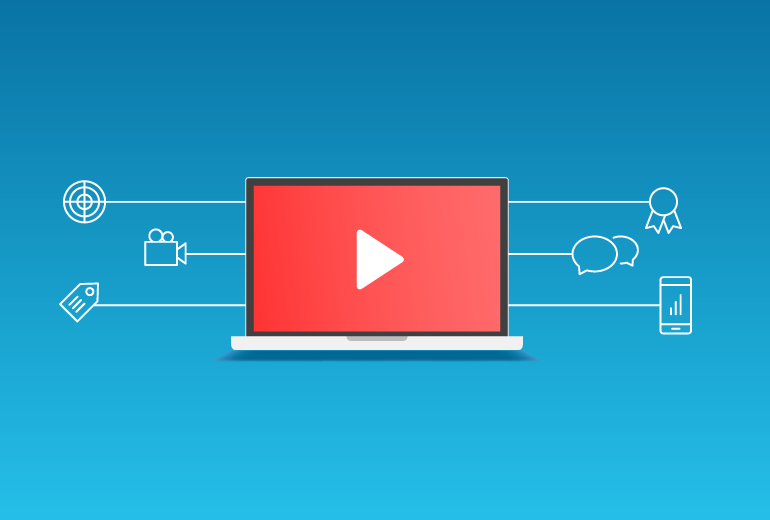New concepts and tactics in digital marketing have created many new opportunities for companies of all sizes, including those with small budgets. These tactics can open up a whole new world for you as a marketer, including different audiences, additional insights, and better ROI.
Many marketers who have been in the game for a long time may want to stick with the tried-and-true methods that have delivered acceptable (or even great) results. And it’s comfortable to stick with what has worked in the past: You know which audiences you’ll target, approximately how many leads you’ll get, and how much it will all cost.
But taking risks in marketing and trying a different strategy, along with new digital tactics, could make a huge difference for your brand. You could raise awareness with audience segments that were previously inaccessible, get deeper engagement with your content, and drive conversions.
Let’s get a better understanding of the types of helpful digital strategies that are out there, then discuss some best practices when deploying any new marketing tactic. These best practices will help you break out of the traditional marketing box that you’ve been in year after year, allowing you to overcome the concerns and risks you’ve had about trying something new.
By no means do these methods represent all the possible digital tactics out there, but they are good starting points for marketers looking to take a leap.

Social Media & Influencer Marketing
For a variety of reasons, you may have historically avoided social media as a marketing tactic. But in today’s digital world, you can no longer write off social media as a fad or a channel that your audience doesn’t use. Social media has become a cultural phenomenon that has seeped into nearly every industry, including the sciences. It offers a direct way to engage with your audiences, whether they’re in industry, academia, or elsewhere. Through this, you can increase brand awareness, while developing a personal relationship with audience members. It also keeps you in the loop about what your competitors are doing.
With its rise, social media has created a generation of people who are “internet-famous” on a variety of platforms, including Twitter, Instagram, and YouTube. These online influencers gather large followings, even in a niche science industry. Eric Topol, head of Scripps Research Translational Institute, has amassed 264,000 followers. Phil Baran, another faculty member at Scripps Research who has established his own lab and is an active influencer in the synthetic chemistry world, was recruited to help IKA launch a new product, with a full video ad campaign and in-person product reveal.
Many influencers have earned the trust of their audience, and thus, wield significant power with the content they post. But it would be a mistake to exclusively target major accounts. Engaging micro-influencers (accounts with between 1,000 and 10,000 followers) can be beneficial too. Having a smaller audience can make them more accessible and relatable to their followers. They also don’t have the pressure to post a lot of content, reducing the noise on their feed so that your discussion and messaging can shine through.
Direct sponsorships and endorsements are another, more traditional way to approach this. If that’s out of your budget, try crafting content that tags or mentions them, or write content that speaks to the fields they’re entrenched in. Another popular strategy is to give your targeted influencers the “first-look” of something special that you’re working on, especially if that’s a tool meant for the wider chemistry community, not just your latest product. When ACS and C&EN released our “Chemoji” stickers, we selected a group of contacts on Twitter that got to download the app so they could share it with their followers first. This drives organic engagement with the influencer and, in turn, the attention of their loyal networks.

Video Content
Creating and distributing video content can be expensive and daunting, and is most often seen as a risk for smaller businesses than the big guns. It takes time and tens of thousands of dollars to produce even a short explainer video. However, for many brands of all sizes, this investment is worth it. Video accounts for 82% of all global internet traffic and it is 50 times more likely to appear on the first page of Google search results. It can be posted to YouTube, your website, used in rich media ads, or any number of other channels. It can also be repurposed into a variety of additional content forms including, blogs, Q&As, or social media posts. So while the upfront cost may provide a bit of sticker shock, there more than enough ways to get the most out of this investment.
Video content lends itself well to the chemical sciences, too. It’s perfect for sharing interviews with influencers or KOLs, or for explaining complex scientific topics in interesting and visually appealing ways. The American Chemical Society’s YouTube channel, as well as C&EN’s Speaking of Chemistry series, are great examples of this creative engagement, with informative videos on the peer-review process, the latest published research and some chemistry basics.

Programmatic Advertising
There is a lot of confusion around programmatic advertising; what it is, when it should be used, and how much it really costs. This lack of understanding may be why many marketers have dismissed it as too risky and confusing.
But programmatic advertising is one of the hot new areas in digital marketing for a reason. In short, programmatic ads are a type of display ad. They can be programmed by a platform or vendor to target a specific audience or persona based on their online behavior. Through a real-time auction that uses a machine learning algorithm, the platform/vendor buys digital ads in places most frequented by your target audience.
This may be a pretty dramatic departure from your previous marketing tactics. A number of vendors have minimum spend requirements or contract lengths, but there are benefits. Chief among them is that you have a range of targeting options, including:
- Contextual targeting: This involves matching your ads to sites with relevant content. An important note here is that many niche publishers are not available on programmatic, so you always want to mix direct buys and programmatic in your spend.
- Behavioral targeting: Targeting individuals based on their browsing history and activity (e.g. do they frequent relevant associations; do they click on science event registration pages?)
- Geotargeting: Serving ads to people in a specific area at a specific time, whether that’s a fundraiser or an industry tradeshow (this can also be achieved through PPC).
Anticipating Different Types of Marketing Risks
Before launching new tactics, it’s important to consider the associated marketing risks – what you stand to lose, and the barriers to implementation. In doing so, you can set expectations and develop an alternative plan, if necessary, that is proactive rather than reactive. Here are our recommendations on what to look at for.
Complying with Regulatory Agencies
New and risky is not always rewarded, especially in the highly regulated life science and healthcare industries, where overextending the claims of what a product does can have significant legal ramifications. In the pharmaceutical industry, for instance, the FDA has some guidelines for “reminder ads” and digital advertising, including social media, but with digital advertising constantly evolving, it is up to an individual company to make judgment calls when launching new types of digital ads. From a legal and regulatory perspective, that can be tough and risky.
How to Prepare: When planning a social media campaign, do your homework on regulatory guidelines and read any available guidance (i.e., FDA). Google and Bing also publish their own policies. All pharmaceutical companies have medical, legal, and regulatory review boards that have their own interpretation of the FDA guidance. They’ll have to review any upcoming campaigns but checking with them early and often can save you time of having to re-write and re-strategize down the road.
Proving ROI
If you’ve been executing the same marketing plan for a while, your supervisors may be accustomed to seeing the same type of data (or lack thereof) presented in a specific way. Changing tactics can require a fresh approach to data analysis and the KPIs you track.
How to Prepare: Be up front. Talk about what you expect to see but be honest in what you can and can’t predict. You can still create targets, but be conservative with your goals, and be prepared to communicate the value of everything you’re doing to your supervisors. If you are planning on developing and releasing video content for the first time, be sure to let your boss know that the average view duration on YouTube is about 50% of the total video length. On Facebook, the average watch time is about 10 seconds! Benchmarking against industry standards can be your best friend when trying something new.
Staying on Brand
Connecting a digital strategy to an overall brand strategy can be a challenge, especially if you are new to digital advertising, or your brand is… let’s say, multi-faceted. But launching a new digital campaign that isn’t consistent with the rest of your brand strategy puts you in a risky position: Your audiences will get a different brand experience depending on where they land. Ideally, whether your audience finds your video online or clicks an influencer’s social media post about one your products, they should be able to identify your specific company voice, graphics, and messaging – all of the features that help you build a brand.
How to Prepare: It’s all about integration. Sometimes marketers can get siloed from digital teams or creative copywriters, all of which have different experiences and attitudes towards branding. When employing a new marketing tactic or campaign, be sure to have other departments review your content, social media, or paid media strategy and make sure it is “on-brand.” Especially when it comes to social media influencers, remember that the goal is not to “trick” your audience into engaging with you. Even a logo or direct mention can go a long way to being transparent, and gaining exposure.
At the end of the day, remember…
Trying something new isn’t easy – that’s why so many people find themselves in marketing ruts. However, by getting the buy-in of your team in the early strategy planning stages, you can avoid a messy transition. With some planning, a bit of calculated risk and some new tactics, this could be the best year for your brand.


















